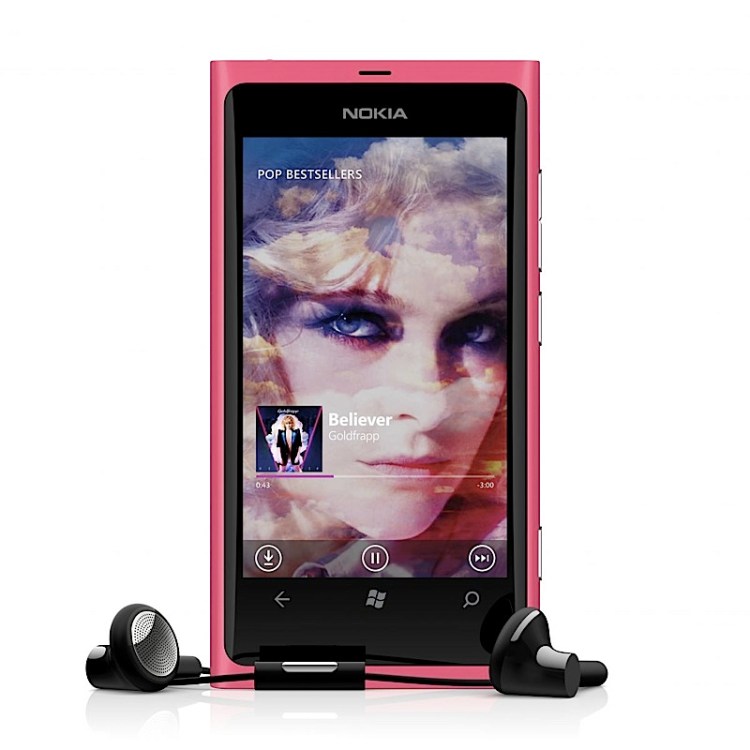 When does half a billion plus half a billion equal zero?
When does half a billion plus half a billion equal zero?
That’s the question that is on my mind this week, as Nokia has just unveiled news about its upcoming Windows Phone lineup at the annual Nokia World conference in London.
(Check out our hands-on with the Nokia Lumia 800 and Lumia 710.)
Nokia and Microsoft are in an unusual position: They are both enormous giants that dominate their respective industries, but are largely regarded as dying dinosaurs by tech industry insiders.
Nokia shipped almost half a billion phones last year (453 million in 2010, to be exact).
And Microsoft has sold almost half a billion copies of Windows 7 (450 million as of September 13, 2011).
But neither company’s success seems to position it very well for their joint challenge: Establishing a beachhead in the smartphone world. Nokia’s expertise has been in selling cheap feature phones, and indeed, that’s where the brightest spots in its recent lackluster earnings have come from.
As we reported recently (with an informative infographic), three out of every five people on planet Earth use SMS text messaging, or a massive 4.2 billion people. There’s no doubt that for a huge chunk of this population, Nokia phones are the devices that give them access to news, mobile banking, government services and even healthcare.
The problem for Nokia is that its phones have been saddled for years with an outdated, clunky operating system, which meant that the touchscreen smartphone revolution, kicked off by Apple’s iPhone and now dominated by Google’s Android operating system, has almost completely passed the company by. That’s a problem, because no one really wants feature phones any more. (Well, I would, but only if it was also a Wi-Fi hotspot that I could use to give internet access to a tablet and a notebook computer. But I’m an odd bird.) I’m sure that even in Nigeria, people would choose smartphones over feature phones if they had a choice.
Meanwhile, Microsoft’s dominance is in a market that, while huge, is already obsolete: PCs. I couldn’t find reliable numbers on how many Windows PCs there are in the world, but it’s almost certainly over a billion.
While that generates plenty of cash for Microsoft today, it’s not clear how well the company will be able to transition to a more smartphone- and tablet-centric world. Microsoft is aiming for tablets with its upcoming Windows 8 operating system, but it’s too soon to tell whether the company will pull it off.
 Microsoft’s mobile operating system, Windows Phone 7, is an impressive piece of work, with an excellent interface and a well-thought-out architecture that integrates phone data (contacts, social media, music, calendars and more) in a smart way. The problem is that there are no apps. Compared to the 600,000 iOS apps and the 500,000 apps in the Android Market, the “thousands” of apps in the Windows Phone 7 marketplace are nearly negligible. Since apps are the main selling point for smartphones, that’s a big problem.
Microsoft’s mobile operating system, Windows Phone 7, is an impressive piece of work, with an excellent interface and a well-thought-out architecture that integrates phone data (contacts, social media, music, calendars and more) in a smart way. The problem is that there are no apps. Compared to the 600,000 iOS apps and the 500,000 apps in the Android Market, the “thousands” of apps in the Windows Phone 7 marketplace are nearly negligible. Since apps are the main selling point for smartphones, that’s a big problem.
Meanwhile, time’s wasting: Apple has been consolidating its position as the phone market’s technology and design leader by releasing a small but well-targeted series of smartphones, and by forming partnerships with an increasing number of carriers.
Google has continued to see success with Android, which now ships on the majority of smartphones from an impressive array of manufacturers, making Android the somewhat less-expensive, great-variety and more-ubiquitous alternative to Apple’s premium brand.
Nokia and Microsoft’s partnership won’t bear fruit until late this year at the earliest. It’s more likely that, in the U.S. at least, we won’t see Windows-based Nokia smartphones until sometime in 2012.
The longer these companies delay, the harder it will be for them to secure a foothold in the competitive smartphone and tablet market.
Nokia and Microsoft are far from dead, with billions of dollars in sales to sustain them for the coming years. The question is whether they can crack the new market together and transform their old businesses into a new growth opportunity.
It may already be too late.
NOTE: Subscribe to my newsletter and you can read these columns a whole day before they appear on our website.
VentureBeat's mission is to be a digital town square for technical decision-makers to gain knowledge about transformative enterprise technology and transact. Learn More

